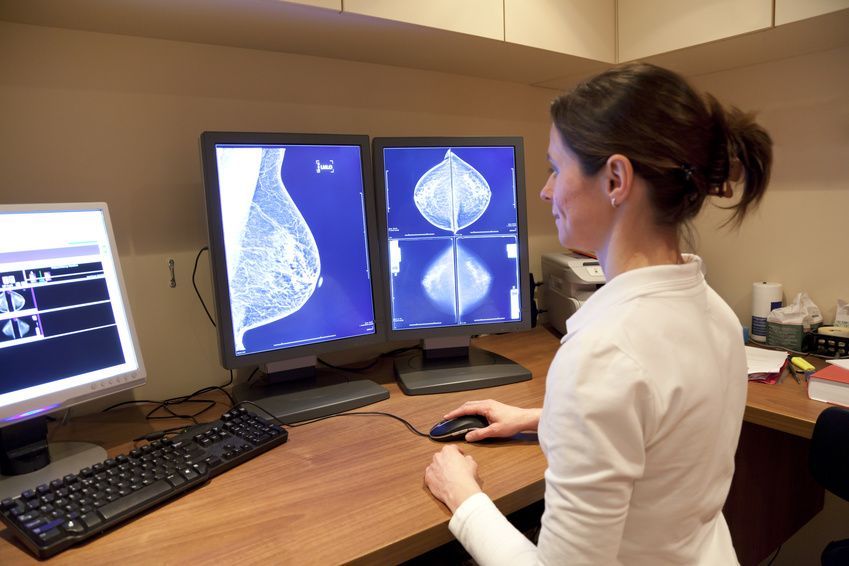
Study Shows Abbreviated Breast MRI may be Best Additional Screening Option for Women with Dense Breasts

Traditional mammograms are less effective at detecting breast cancer among women with dense breast tissue, so many women request additional screening after a negative mammogram. Results from a new study suggest that abbreviated breast MRI (AB-MRI) may be a valuable tool for detecting cancer in these women.
Researchers recruited 195 women into the study. To qualify for the study, participants had dense breast tissue, did not have symptoms of breast cancer, and had a negative mammogram within the previous 11 months. The researchers performed AB-MRI on participants who had a negative screening mammography – the test detected five additional cancers.
The Penn Medicine research team reported their preliminary findings at a recent Radiological Society of North America meeting held in Chicago. The findings are startling, especially since mammograms typically find about four cancers in every 1,000 women who undergo the test. AB-MRI found five cancers in just 195 women. This means AB-MRI has a cancer detection rate of 25 cancers per 1,000 women screened.
3D mammography does slightly better at detecting breast cancer than standard mammography; it detects roughly five cancers in every 1,000 patients screened.
About Breast Cancer
Except for skin cancer, breast cancer is the most common cancer in women, according to the American Cancer Society. One in eight women in the nation will develop breast cancer at some point in life. According to Cancer Society’s estimates, doctors will diagnose about 266,120 new cases of invasive breast cancer in women during 2018. Approximately 40,920 women will die from the disease this year.
Cancer is a disease characterized by rapid growth of unhealthy cells. Cancer can spread, or metastasize, from the breast to other parts of the body in stages. In the first stage, breast cancer remains localized to just a few cells within breast tissue. In stage II breast cancer, the tumor has grown larger but the cancer cells remain within breast tissue. Cancer cells grow in nearby tissue outside the breast in stage III. In stage IV, breast cancer cells spread well beyond the breast and grow in faraway areas of the body.
Early detection is essential, as survival rates vary according to how far the cancer has spread. Women who receive a diagnosis of stage I and stage II breast cancer tend to have a better prognosis, or outcome, than do women diagnosed with stages III or IV breast cancer. This is because the cancer is most responsive to treatment while the cancer is confined to the breast tissue.
Breast Cancer Screening and Breast Density
Routine screening helps doctors detect breast cancer in its early stages. Traditional mammograms are perfectly suited for most women, as mammography technology can detect breast cancer tumors that are too small to be felt.
The drawback to standard mammography is that the test may return false negative and false positive results. A false-negative mammogram looks fine even though cancer is there, while a false-positive mammogram looks abnormal even though there are no cancerous cells there. Women with dense breasts receive more false-negative results. This is especially true for young women with dense breasts, as breasts become less dense with age.
Breasts contain two main types of tissue:
- Dense breast tissue, which includes milk glands, milk ducts, and supportive tissue
- Non-dense breast tissue, made of fatty tissue
Dense breast tissue makes it more difficult to see cancer on a mammogram. On a mammogram image, fatty non-dense tissue appears dark and transparent. Dense breast tissue appears solid white on a mammogram.
When reviewing a mammogram image, doctors look for calcifications, which are tiny calcium deposits that may or may not be the result of cancer. Calcifications appear as small white spots on mammograms. These small white spots can be very difficult to see against the solid white color of dense breast tissue.
Because of the risk of false negatives, many women with dense breasts ask for supplemental screening tests to verify the results of a negative mammogram. Supplemental screening typically involves whole breast ultrasound, which have higher rates of false positives. The new study suggests a better option for supplemental screening – abbreviated breast MRI.
Breast MRI is a type of imaging that uses contrast material, injected into the vein, which helps to show details in breast tissue clearly. Abbreviated breast MRIs are fast, taking only a few minutes to perform. Standard MRI test procedures apply; patients will remove any jewelry and wear a robe for the test.
Susan Weinstein, MD, an associate professor of Radiology and the director of breast MRI at Penn Medicine says, “Based on the literature and our results, women with dense breast tissue who desire supplemental screening, these results suggest that AB-MR may be a better option than other supplemental screening tests such as whole breast ultrasound.”
For more information on primary and supplemental screening for breast cancer, make an appointment with your doctor.




